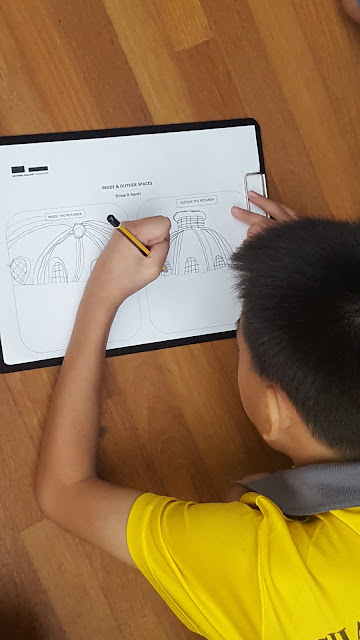We started the lesson with the above question. Some children love to debate on this issue as they have personal real-life examples to share. Then we proceeded to watch Professor Richard Wiseman video on "assumption". While some have problems explaining the meaning of assumption, I just asked them if anyone check for faulty stools before taking a seat in class (Usually none of them do). So, by not checking, all of them are making an ASSUMPTION that their stools are good to sit. The children today isn't as gullible anymore. BUT, you can't always assume! The part about discerning facts from fiction especially online is still my thing. So, I like showing them another video "the ball" that is fun to watch.
Throughout the unit, we had discussion about various artwork and artists related to the theme such as the Ames illusion, M.C. Escher's work, notice the anamorphic skull in "The Ambassadors" painting, read story about "The contest of Zeuxis and Parrhasius".
Link real-life examples of what the children are learning where possible. For example, you can share the research by Kokichi Sugihara, a Japanese Mathematician and his 3D optical illusions that are used to help in reducing traffic congestion on freeways.
Link real-life examples of what the children are learning where possible. For example, you can share the research by Kokichi Sugihara, a Japanese Mathematician and his 3D optical illusions that are used to help in reducing traffic congestion on freeways.



































